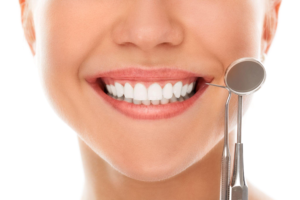
Smile design takes more than just a good smile; it is a unique combination of science, art and patient focused hearing. The orthodontic smile design covers not only facial contours but also dental depth. It deals with changing smile patterns and ensuring the faces have a high general proportion. Here, we are going to look into the field of smile design and evaluate the standards, strategies and thoughts that are used in making radiant smiles that are reflective of assurance and charm.
Understanding Smile Design:
Smile designing which is also termed as cosmetic dentistry or aesthetic dentistry is an in-depth process that centers on improving the look of the smile through different dental treatments and techniques. This includes resolving problems like tooth staining, misalignment, shape inconsistencies, and bleeding of gums to produce a balanced, straight, and cosmetically appealing smile. Smile design also takes into account the singular characteristics of the teeth as well as the general facial features to come with this and achieve better results.
The Standards of Smile Design:
Smile design is directed by a few key rules that structure a fruitful treatment plan:
- Facial Feel: First comes an overall assessment of the patient’s facial features such as the face, lips, eyes, and nose which are taken into account. Learning the patient’s fascinating facial features will determine the appropriate sizing and shapes for an aesthetic smile.
- Tooth Proportions: The size, shape, and position of the teeth play a major role in any smile design. Similarly, proportion and the standards of conformity and consistency are used for the restorative proportions of the size of teeth that are compatible with the patient’s face.
- Tooth Tone and Shade: Obtaining the proper enamel color and shade is the main thing that matters for a nice smile look. The aesthetic part involves matching the right tooth color of the veneers and other restorative materials to the patient’s natural teeth in their complexion.
Strategies and Methods:
Smile design incorporates a wide range of dental treatments and strategies, including:
- Teeth Whitening: Whites and brightens all kinds of stained and stained teeth for younger and more energetic teeth.
- Dental Facade: Thin and fragile porcelain caps that fill the given void at the front surface of the teeth to deal with problems like chips, breaks, or holes.
- Orthodontics: Adjusts the bite and fixes crossbite problems by employing braces, invisible aligners with the help of an orthodontist.
- Dental Implants: Substitute natural teeth with manufactured tooth roots that allow a regular looking replacement teeth.
Conclusion:
An exceptional smile design includes diverse technical skills, artistic flair, and a patient-oriented attitude. Through the knowledge of the measures of facial features, tooth extents, and specific treatment arrangements, dentists can make charming smiles that can enhance the sense of facial friendliness as well as confidence. It can be as simple as treating minor imperfections or as extensive as a complete smile transformation; the smile design opens up a whole new world with amazing outcomes in which people can smile with confidence and demonstrate their high standard.




